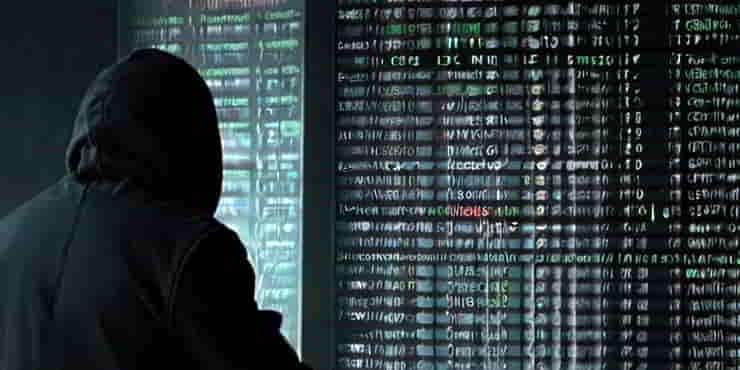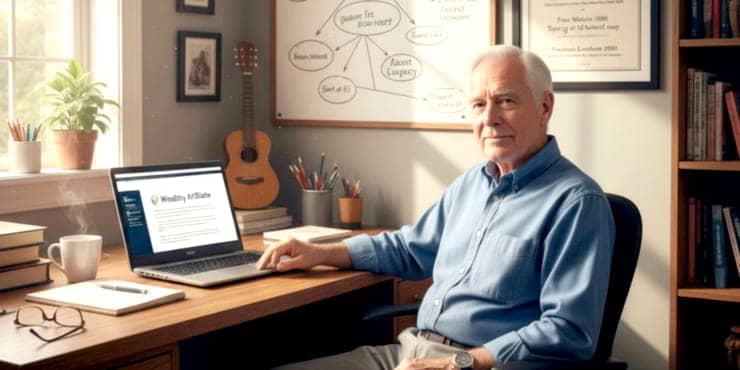WordPress Security Tips: Protecting Your Site from Hackers

Estimated reading time: 8 Min
Just like beefing up home security, protecting a WordPress site from digital desperados is about knowing how. These WordPress security tips work.
Imagine your WordPress site as your digital home.
Just as you wouldn’t dream of leaving your front door swinging in the wind while you pop down to the shops, you shouldn’t leave your website vulnerable to the wily ways of the digital underworld.
In the bustling city of the internet, hackers are the equivalent of opportunistic burglars, always on the lookout for an easy target.
So, would you leave your digital front door unlocked? No? Good!
Let’s get to work securing your online abode.
Understanding the Risks
Before we bolt the doors and shutter the windows, let’s take a moment to understand the neighbourhood we’re living in.
The digital locale, much like a bustling city, is filled with opportunities and risks.
In our online world, these risks come in the form of malware, brute force attacks, and ever-creepy phishing attempts, akin to the different pests and intruders trying to invade our peaceful homes.
Imagine malware as those pesky termites that eat away at your home’s foundations, silently and invisibly.
Then there are the brute force attacks, the digital equivalent of a burglar trying every key on his ring to unlock your front door.
And let’s not forget about phishing attempts—those are like the con artists who try to sweet-talk their way into your home, only to ransack it.
The consequences of these threats are not just virtual; they’re real and tangible.
Imagine coming home to find your front door wide open, your valuables gone, and your personal space violated.
That’s what it feels like when your WordPress site is hacked: personal information stolen, your website defaced, and your digital reputation in tatters.
Server-Level Security Measures
Now, let’s talk about fortifying our digital fortress, starting with the foundation: server-level security measures.
Secure Hosting Environment
Choosing a hosting service is like picking a neighbourhood for your new home.
You wouldn’t settle in a notorious crime hotspot, would you?
Similarly, opt for a hosting provider such as Wealthy Affiliate, known for its strong security measures. It’s like living in a gated community with 24/7 surveillance.
Regular Software Updates
Just as you’d maintain your home to keep it from falling apart, you need to keep your server’s software up to date.
This includes the operating system, PHP, MySQL, and more.
Outdated software is like a broken window; it invites trouble.
Network Monitoring and Firewalls

Imagine having a security guard who monitors your home around the clock, alerting you to any suspicious activity.
That’s what network monitoring does for your website.
And firewalls?
They are the high, impenetrable walls that keep intruders at bay, ensuring that only welcome guests can enter your digital domain.
Secure File Permissions and SSH Access
Think of file permissions as who has the keys to your house. You wouldn’t give a stranger access to your bedroom, right?
Setting proper file permissions is crucial to keeping your site’s inner workings private.
And when it comes to accessing your site’s backend, SSH (Secure Shell) is like a secure, encrypted delivery service for your data, ensuring that only those with the right clearance can get through.
Website-Level Security Measures
Now that we’ve secured the perimeter, let’s move inside and make sure our internal security is up to scratch. It is your business, after all!
Strong Passwords and User Permissions
This one’s a no-brainer but often overlooked.
Using strong, unique passwords is like having a high-quality lock on your door.
And just as you wouldn’t give every house guest a key to every room, carefully manage who has access to what on your WordPress site through user permissions.
Regular WordPress Updates
Keeping your WordPress core, themes, and plugins updated is like keeping your home appliances in good working order.
Not only does it ensure everything runs smoothly, but it also keeps you safe from known vulnerabilities, which, in our analogy, are like decayed spots that pests could exploit.
Security Plugins and Scanners
Installing a security plugin is akin to setting up a home alarm system.
Check with your host first. They may already have this covered.
It will monitor your site for suspicious activity, block unwanted intruders, and alert you to any potential security breaches.
Regular scans are like routine checks around the house, ensuring that everything is as it should be.
Backups
Ever thought about what you’d do if your house burned down?
You’d hope you had a copy of everything valuable stored elsewhere.
That’s what backups are for your website.
Automated backups ensure that, even in the worst-case scenario, your digital life can be rebuilt.
HTTPS and SSL Certificates
Finally, secure your site with HTTPS and an SSL certificate. Some hosts provide SSL certificates.
This is like sending your mail in a locked, tamper-proof envelope instead of on a postcard for all to see.
It encrypts the data between your site and your users, keeping sensitive information safe from prying eyes.
Regular Maintenance and Vigilance
Just as you wouldn’t install locks on your doors and then forget about them for years, the same goes for your website’s security.
Regular maintenance and vigilance are the keys to keeping your digital home safe and sound.
Security Audits
Imagine inviting a security expert to inspect your home for any potential weaknesses; that’s what a security audit is for your website.
It’s a thorough check-up to ensure all security measures are up-to-date and effective.
Conduct these audits regularly, just as you’d have regular inspections of your home’s electrical wiring or plumbing.
Education and Awareness
Stay informed about the latest security threats and trends, akin to keeping abreast of neighbourhood crime reports.
The digital landscape is ever-evolving, with new threats emerging all the time.
Follow WordPress security blogs, join forums, and attend webinars to stay one step ahead of the hackers.
Think of it as joining your local neighbourhood watch programme.
Two-Factor Authentication (2FA)
This is like having a double-locking system on your front door.
Even if someone manages to guess your password (the first lock), they’ll still need a second form of verification (the second lock) to access your site.
Implementing 2FA adds an extra layer of security, significantly reducing the risk of unauthorised access.
Regularly Change Passwords
Changing your locks periodically is a good security practice in the physical world, and the same principle applies in the digital realm.
Regularly update your passwords and ensure they’re strong and unique.
It’s like changing your locks after lending out keys to a now-estranged friend; it’s better to be safe than sorry.
Dealing with Security Breaches
Even with the best security measures, breaches can still happen.
It’s like having a break-in despite your best efforts to secure your home. The important thing is how you respond.

Immediate Actions
If you discover your site has been compromised, act immediately.
Think of it as discovering a broken window in your home.
You wouldn’t wait to fix it, would you?
Immediately take your site offline to prevent further damage, assess the situation, and start the clean-up process.
Identify and Remove the Threat
Just as you would comb through your home to understand how the intruder entered and what was taken, inspect your site to find out how the hacker got in and what they’ve done.
Remove any malicious code or content they’ve left behind.
Restore from Backup
Once the threat is neutralised, restore your website from a recent, clean backup. It’s like rebuilding your house after a disaster; it might be daunting.
With solid foundations (your backups), it’s entirely possible.
Notify Affected Parties
If user data was compromised, inform your users immediately.
It’s the digital equivalent of telling your neighbours about a break-in so they can take precautions too.
Review and Improve
After the incident, review what happened and how you handled it.
This is a learning opportunity to strengthen your digital home against future invasions.
Creating a Culture of Security
Security isn’t just about tools and protocols; it’s also about mindset.
Creating a culture of security within your organisation, or even within yourself, is like fostering a community watch programme.
Regular Training
Educate yourself and your team (if you have one) about security best practices. Regular training sessions are like fire drills; they prepare you for emergencies.
Staying Updated
Keep up with the latest security news and updates, akin to staying informed about local crime patterns. This knowledge can help you stay proactive rather than reactive.
Encourage Reporting
Just as you would encourage family members to report suspicious activity in the neighbourhood, foster an environment where colleagues or users feel comfortable reporting potential security issues.
Summary: WordPress Security Tips And Next Steps
By adopting this comprehensive approach, you’re both creating a secure website and creating a security mindset that effects every aspect of your digital life.
Securing your WordPress site might seem daunting, like fortifying a house in a high-crime area.
But just as with home security, taking it one step at a time can make the process manageable and even empowering.
First, check out your host’s services. What level of security are they providing?
Then, on your site, start with one area, such as updating their passwords or setting up two-factor authentication, and then move on to the next.
Remember that security is not a one-time task but a continuous process.
It’s about building walls as well as maintaining them and staying vigilant.
I invite you to share your own experiences and tips in the comments here.
Security, after all, is a community effort, both in the digital and physical worlds.
By sharing knowledge and supporting each other, we can all enjoy safer, more secure digital homes.
Now that you’ve armed yourself with knowledge, it’s time to act.
There’s no time like the present to review your WordPress site’s security.
Update, upgrade, and stay vigilant. Your digital home deserves no less.
🙂
Richard


![Are Wealthy Affiliate Hubs Revolutionising Website & Content Development In [year]? A futuristic and sleek digital workspace designed for website management and content creation - Wealthy Affiliate Hubs](https://ml0yvzumdtic.i.optimole.com/cb:k6B_.1fa14/w:740/h:370/q:mauto/https://solobusinessmind.com/wp-content/uploads/2024/12/A-futuristic-and-sleek-digital-workspace-designed-for-website-management-and-content-creation-Wealthy-Affiliate-Hubs740x370-O.jpg)



